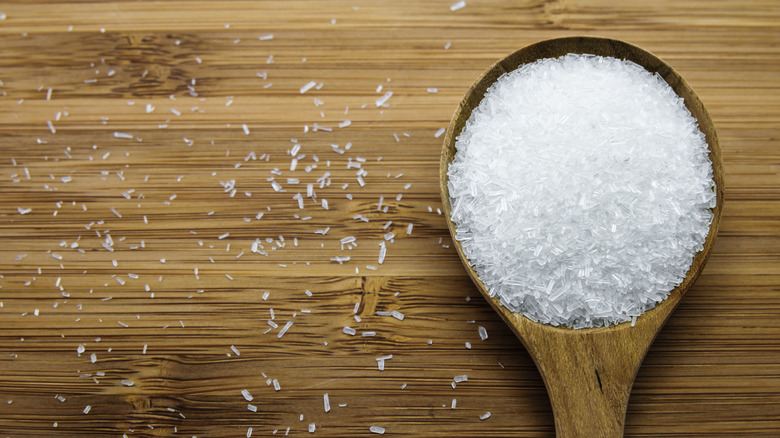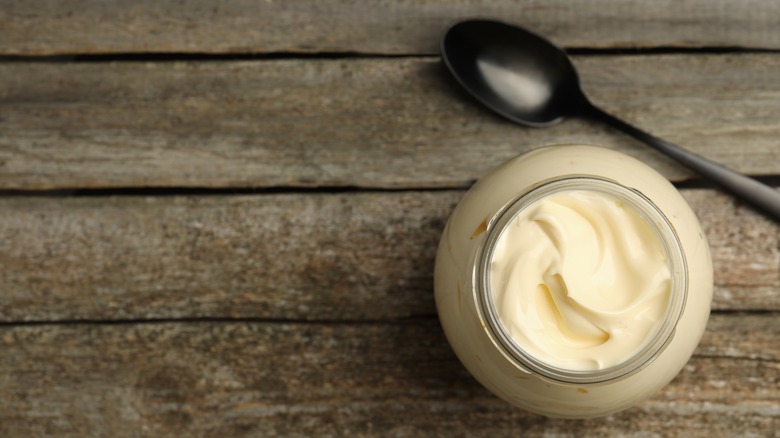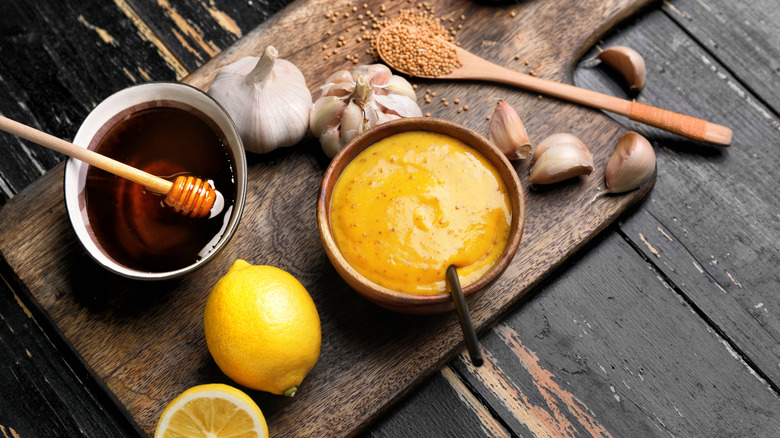All You Need To Turn Mayo Into A Delicious Dip Is A Sprinkle Of MSG
MSG stands for monosodium glutamate and is the "sodium salt of the common amino acid glutamic acid," per the FDA. It has been used since the 1950s as a flavor enhancer and preservative, however, its potential health risks have built up much anxiety around its use. Healthline states that MSG is considered safe in small doses, and as the stigma surrounding the additive looks to be ending, now is the time to make up for lost time. Let's start with mayonnaise which only requires a small sprinkle of MSG to transform this common condiment into a deeply moreish dip.
It takes less than a teaspoon of MSG to amplify all the wonderful flavors inside your rather ordinary mayonnaise. MSG is renowned for delivering the fifth taste: umami and punching a salty, savory deliciousness into all the crucial ingredients used in mayonnaise. It's straightforward to make and does not even require creating homemade mayonnaise. How could you possibly resist trying?
Mayonnaise has never tasted so good
It's up to you how much MSG you'll need to turn your mayonnaise into a delicious dip, but this will likely be based on your taste buds and the amount of mayonnaise you're using. It's best to start with a ramekin of mayonnaise and add small sprinkles of MSG (as you would with salt) until you are satisfied with the taste. You may or may not start to taste the MSG's effects quickly.
If you're wondering how this could possibly enhance your mayo, then you need only look at Kewpie mayonnaise. It's a famous Japanese staple that combines rich egg-yolk-heavy mayonnaise with MSG. It's deeply umami and moreish. Be aware that there is a limit to richness when mimicking these flavors, and adding more MSG will not unlock some higher mayonnaise domain. Too much of the additive will make your mayo taste far too salty and slightly metallic. If it reaches this point, it's best to start again or add more mayonnaise to the mix.
How to use MSG in other dishes
Perhaps you're not really a fan of mayonnaise, or you want to branch out to other simple applications of using MSG. A small sprinkle of MSG can be added to soups, stews, and sauces to amplify the savory notes. But alongside this, salad dressing can also benefit from a touch of MSG. Try out a sprinkle in a ranch or Caesar dressing, or stir a little into honey mustard. It'll elevate the sauce to a creamier and more savory version of itself — seriously igniting the flavors of leafy greens and vegetables.
Using MSG does not end with foods as it can also be added to beverages. And, you may be surprised to know that the little white crystals can majorly level up a martini. It takes the brine in the martini and intensifies the taste, complementing the bold vodka (or gin) and subtle vermouth. While you may previously have had reservations about its uses or risks, it's clear that a pinch of MSG can make your food and drink sing. First stop though: mayonnaise!


